2 million patients treated annually. 10% of people will have it during lifetime
2 million patients annually.
10% treated during lifetime
Plantar Fasciitis


Plantar Fasciitis
Plantar fasciitis is a common condition that causes heel pain, typically most severe when taking the first steps after waking up. The plantar fascia is a thick, fibrous band of tissue that runs along the bottom of the foot from the heel to the toes, providing arch support and absorbing shock when walking or running. When this fascia becomes irritated or inflamed, it results in plantar fasciitis.
Plantar fasciitis is a common condition that causes heel pain, typically most severe when taking the first steps after waking up. The plantar fascia is a thick, fibrous band of tissue that runs along the bottom of the foot from the heel to the toes, providing arch support and absorbing shock when walking or running. When this fascia becomes irritated or inflamed, it results in plantar fasciitis.
FAQ on what you should know about the healing of
Plantar Fasciitis
FAQ on what you should know about the healing of
Plantar Fasciitis
What Causes Plantar Fasciitis
Plantar fasciitis occurs when the plantar fascia, a thick band of tissue along the bottom of the foot, becomes irritated or inflamed. This often happens due to repetitive strain from activities like running, prolonged standing, or excessive walking, which overstretch the fascia. Foot structure issues, such as flat feet, high arches, or abnormal walking patterns, can also contribute to extra stress on the tissue. Wearing shoes with poor arch support or overly soft soles may worsen the condition, while excess weight increases pressure on the fascia. Additionally, tightness in the Achilles tendon can affect foot mechanics, leading to plantar fasciitis. The condition is more common in people between 40 and 60 years old, as aging affects tissue elasticity. Repeated stretching and tearing of the fascia results in inflammation and pain, especially in the heel. If left untreated, it can become a chronic issue. To manage or prevent plantar fasciitis, it helps to wear supportive footwear, stretch regularly, and address any contributing risk factors.
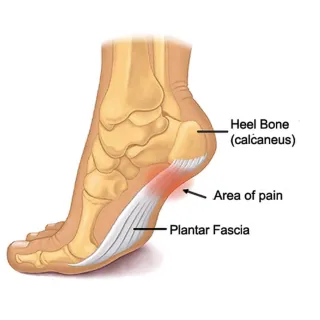
How do you know the pain is Plantar Fasciitis
The most common symptom is heel pain, especially when taking the first steps in the morning or after long periods of rest. The pain is usually sharp and located at the bottom of the heel, though it may extend along the arch of the foot. One way to test for plantar fasciitis is the Windlass Test—while sitting, pull your toes back toward your shin and see if this causes pain in the arch or heel. Another test involves pressing on the bottom of your foot near the heel; if this area is tender to touch, it may indicate plantar fasciitis. Additionally, if your pain worsens after prolonged standing, walking, or running but improves with rest, it could be a sign of the condition.
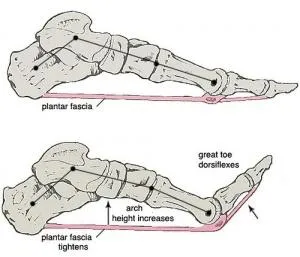
What is the traditional treatment for Plantar Fasciitis
Doctors will recommend Nonsteroidal anti-inflammatory drugs (NSAIDs) like ibuprofen can help reduce pain and inflammation. Physical therapy is often recommended to stretch and strengthen the plantar fascia, Achilles tendon, and lower leg muscles. Orthotic inserts and night splints can provide support and prevent excessive strain on the fascia. Applying ice therapy and resting the foot can also help manage symptoms. If conservative treatments don't provide relief, Surgery is considered a last resort, where the plantar fascia is partially released from the heel bone.
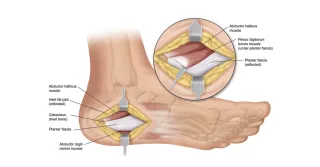
How does Softwave Treat Plantar Fasciitis
Shockwave therapy treats plantar fasciitis by using high-energy sound waves to stimulate healing and reduce pain. The treatment works by creating microtrauma in the affected area, which triggers the body's natural healing response. This leads to the formation of new blood vessels, improved circulation, and increased collagen production, all of which help repair damaged tissue. Additionally, shockwave therapy can break down calcifications and reduce chronic inflammation, making it effective for long-term relief. The procedure is non-invasive and typically performed in multiple sessions, with many patients experiencing significant pain reduction and improved mobility over time.
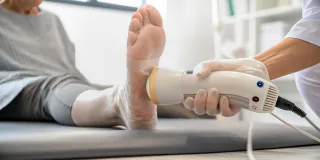
Does the Shockwave Procedure have clinically proven results.
There have been numerous clinical studies evaluating the effectiveness of shockwave therapy for plantar fasciitis. A systematic review and meta-analysis identified seven studies specifically analyzing plantar fasciitis treatment outcomes with shockwave therapy. Additionally, individual studies, such as a pilot study comparing different shockwave therapy protocols, have been conducted to assess pain reduction and functional improvement. Another study evaluated plantar fascia thickness reduction and pain relief after four sessions of shockwave therapy in patients with calcaneal spurs. Overall, research suggests that shockwave therapy can be an effective non-invasive treatment for plantar fasciitis and number of studies continues to grow as more clinical trials are conducted. You can view a detailed study on shockwave treatment for Plantar Fasciitis here.

Why is Softwave considered a preferred treatment for Plantar Fasciitis?
Shockwave therapy is considered more effective for treating plantar fasciitis because it directly stimulates healing rather than just managing symptoms. Unlike traditional treatments such as rest, ice, and anti-inflammatory medications, which provide temporary relief, shockwave therapy promotes long-term recovery by triggering biological responses in the affected tissue. One of its key benefits is rapid pain relief—many patients experience improvement after just a few sessions. Another advantage is that it is non-invasive, meaning there are no incisions, stitches, or risks associated with surgery. Patients can resume normal activities immediately after treatment, making it a practical option for those with busy lifestyles.
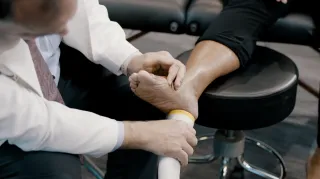
What is the treatment doing to heal the pain of Plantar Fasciitis
Softw.ave therapy heals plantar fasciitis by creating microtrauma in the affected tissue, which stimulates the body's natural healing response. This process triggers the formation of new blood vessels, improving circulation and delivering oxygen and nutrients to the damaged plantar fascia. Additionally, shockwave therapy stimulates collagen production, helping to rebuild and strengthen the tissue. Another key mechanism is hyperstimulation of nerve endings, which can lead to immediate pain reduction. The therapy also breaks down calcifications that may have formed in the fascia, reducing stiffness and improving mobility. By increasing cell permeability, shockwave therapy enhances the body's ability to repair damaged tissue works by stimulating new blood vessel formation, increasing collagen production, and breaking down calcified fibroblasts, which contribute to chronic pain. Additionally, shockwave therapy reduces inflammation by activating mast cells, helping the body naturally calm swelling
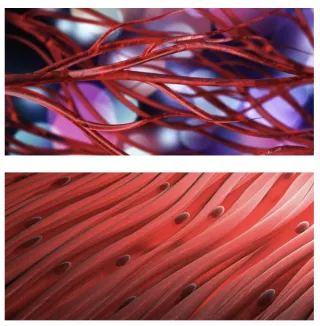
Is the treatment painful for Plantar Fasciitis
SoftWave therapy is generally less painful than traditional shockwave treatments. While both therapies use acoustic waves to stimulate healing, SoftWave therapy delivers uses low-intensity, unfocused waves over a broader area, making it a gentler and more comfortable experience. In contrast, traditional shockwave therapy uses high-intensity, focused waves, which can cause temporary discomfort to the treated tissue. SoftWave therapy works by enhancing blood circulation, activating stem cells, and reducing inflammation without causing significant pain. Many patients report minimal discomfort during treatment, and some even experience immediate relief after a session. If you're looking for a non-invasive, low-pain option for plantar fasciitis or other musculoskeletal conditions, SoftWave therapy might be a good choice.
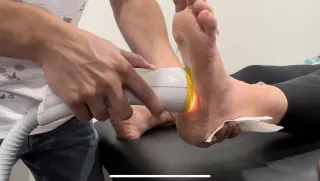
Dig into the clinical results of proven studies on SoftWave.
Dig into the clinical results of proven studies on SoftWave Therapy.
click to see full research report
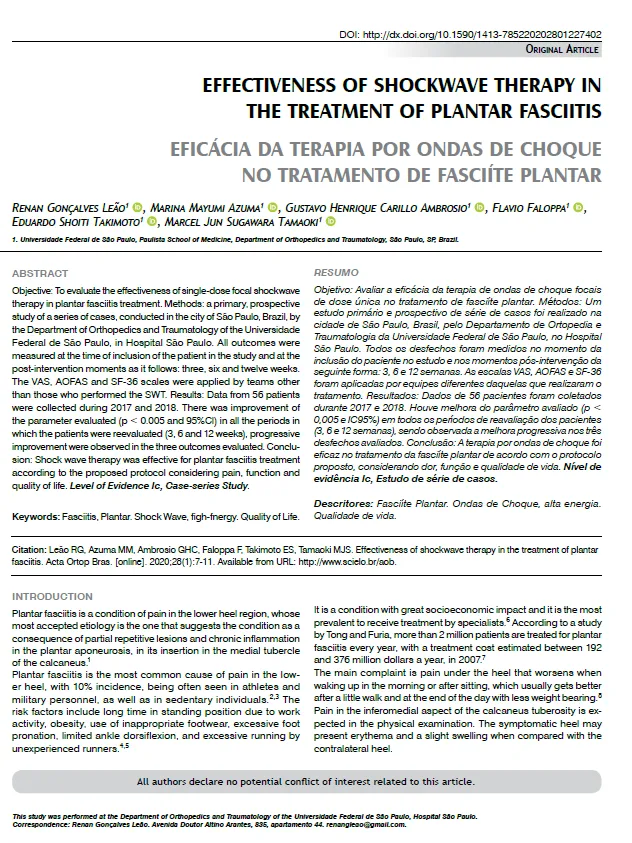
Causes of Plantar Fasciitis
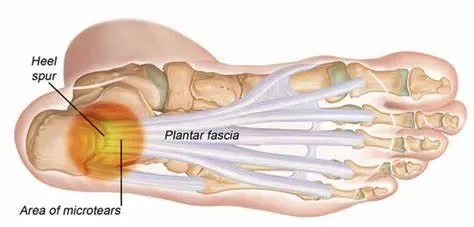
Overuse: High-impact activities such as running, dancing, or long periods of standing can lead to repetitive stress on the plantar fascia.
Foot Mechanics: Abnormal foot mechanics like flat feet or high arches can cause uneven weight distribution, leading to strain on the fascia.
Age: The condition is more common in middle-aged individuals, though it can affect all ages.
Weight: Excess body weight increases the load on the plantar fascia, leading to strain and potential injury.
Improper Footwear: Shoes that lack proper arch support or have soft soles can contribute to the development of plantar fasciitis.
Tight Calf Muscles: Limited ankle flexibility due to tight calf muscles can put extra tension on the plantar fascia.
Overuse: High-impact activities such as running, dancing, or long periods of standing can lead to repetitive stress on the plantar fascia.
Foot Mechanics: Abnormal foot mechanics like flat feet or high arches can cause uneven weight distribution, leading to strain on the fascia.
Age: The condition is more common in middle-aged individuals, though it can affect all ages.
Weight: Excess body weight increases the load on the plantar fascia, leading to strain and potential injury.
Improper Footwear: Shoes that lack proper arch support or have soft soles can contribute to the development of plantar fasciitis.
Tight Calf Muscles: Limited ankle flexibility due to tight calf muscles can put extra tension on the plantar fascia.

Symptoms & Diagnosis
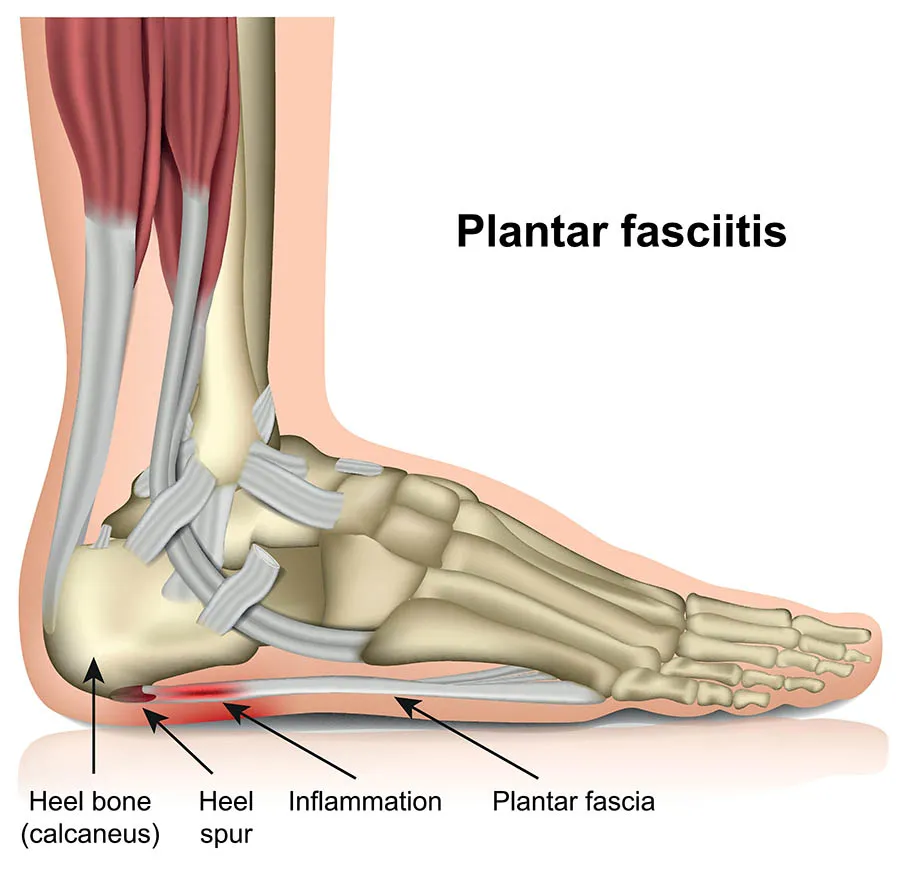
Common Signs
Location of Pain: The most common spot for plantar fasciitis pain is the bottom of the heel, where the plantar fascia ligament attaches to the heel bone.
Timing of Pain: Pain is typically worse with the first steps in the morning or after periods of inactivity. It may also flare up after prolonged activity.
Home Tests
First Step Test: Observe the pain level when you take your first steps in the morning. If the pain is sharp and intense, it could be a sign of plantar fasciitis.
Toe Extension Test: Sit down and extend your toes upward. If this movement causes pain in the bottom of your foot, it might indicate plantar fasciitis.
Medical Diagnosis
Patient History: The doctor will ask about the symptoms, including the location, duration, and pattern of pain. Commonly, pain is described as stabbing and is worse after periods of rest or in the morning.
Physical Examination: The doctor will examine the foot, checking for areas of tenderness, particularly at the heel. They may also observe the patient's gait and look for signs of abnormal foot mechanics.
Imaging Tests: While not always necessary, imaging tests like X-rays or ultrasounds can help rule out other conditions, such as fractures or bone spurs.
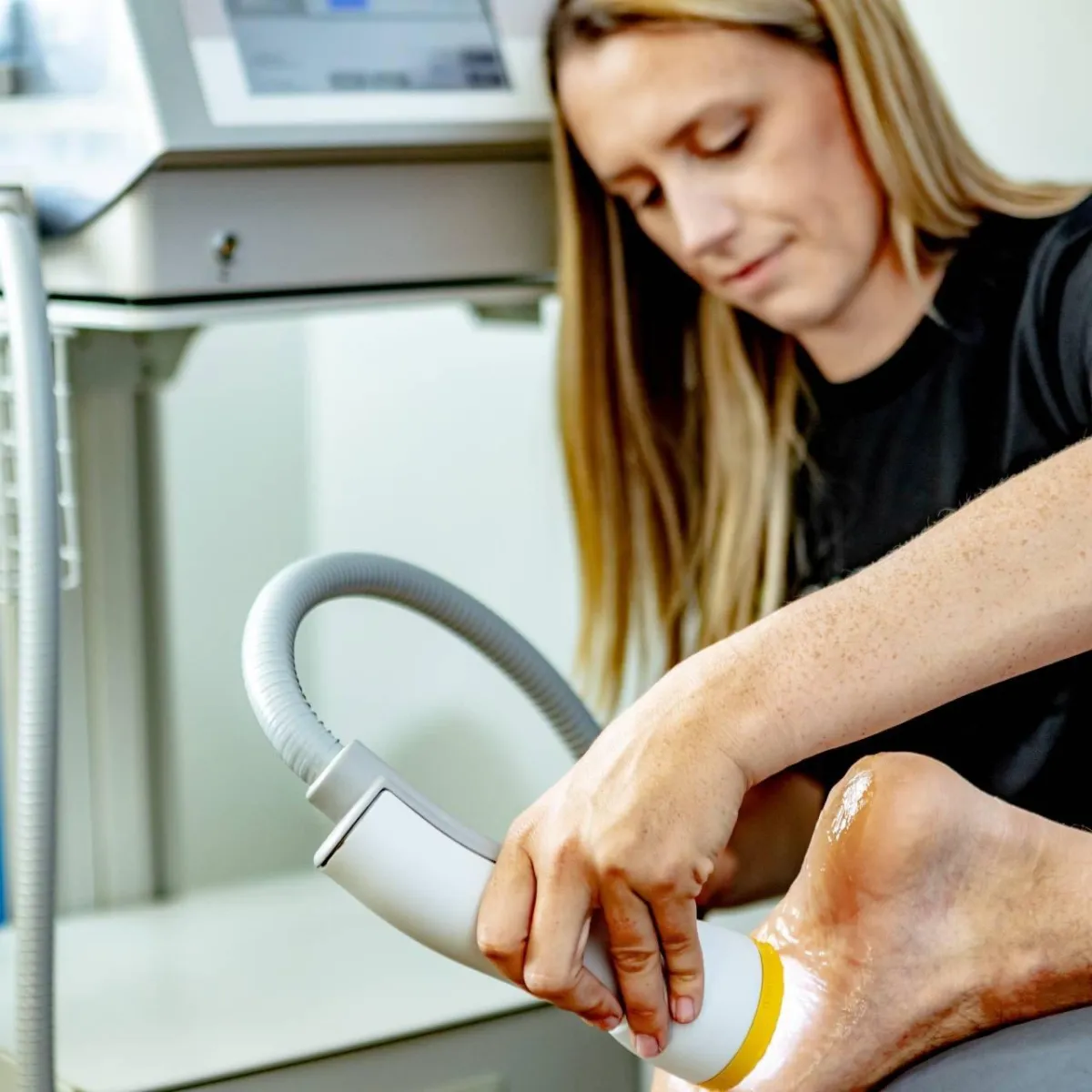
Softwave Treatment
Traditional treatments for plantar fasciitis include rest, physical therapy, orthotic inserts, and medications. While these methods can be effective, they often provide only temporary relief and may require prolonged use2. In some cases, more invasive options like injections or surgery may be recommended, but these come with risks and longer recovery times.Overall, shockwave therapy offers a promising alternative for those seeking a non-invasive, effective, and long-lasting solution for plantar fasciitis.
Traditional treatments for plantar fasciitis include rest, physical therapy, orthotic inserts, and medications. While these methods can be effective, they often provide only temporary relief and may require prolonged use. In some cases, more invasive options like injections or surgery may be recommended, but these come with risks and longer recovery times. Overall, shockwave therapy offers a promising alternative for those seeking a non-invasive, effective, and long-lasting solution for plantar fasciitis.
How Softwave Heals Plantaar Faciitis
Sound Waves: High-energy sound waves are directed at the plantar fascia, the thick band of tissue that runs along the bottom of your foot.
Microtrauma: These sound waves create microtrauma in the tissue, which stimulates the body's natural healing process.
Blood Flow: The therapy increases blood flow to the area, bringing more nutrients and oxygen to help repair the damaged tissue.
Pain Reduction: It also helps to reduce pain by hyperstimulating the nerve endings in the area.
Downsides of Traditional Treatments
Rest and Ice (RICE):
Temporary Relief: Provides only short-term relief and doesn't address the underlying cause.
Limited Effectiveness: May not be effective for severe cases.
Pain Medications:
Side Effects: Nonsteroidal anti-inflammatory drugs (NSAIDs) can cause gastrointestinal issues, kidney problems, and other side effects if used long-term.
Symptom Masking: They only mask the pain and do not treat the root cause of the condition.
Orthotic Inserts:
Cost: Custom orthotics can be expensive and may not be covered by insurance.
Adjustment Period: It may take time to get used to wearing orthotics, and they may not provide immediate relief.
Cortisone Injections:
Temporary Relief: Provides temporary relief and may require repeated injections.
Side Effects: Potential side effects include weakening of the plantar fascia, increased risk of rupture, and other complications.
Physical Therapy:
Time-Consuming: Requires regular sessions and exercises, which can be time-consuming and require commitment.
Variable Results: Effectiveness can vary depending on the individual's condition and adherence to the therapy.
Surgery:
Invasive: Surgery is invasive and comes with risks such as infection, nerve damage, and prolonged recovery time.
Not Always Effective: There's no guarantee of success, and some patients may continue to experience pain even after surgery
Cortisone Injections:
Temporary Relief: Provides temporary relief and may require repeated injections.
Side Effects: Potential side effects include weakening of the plantar fascia, increased risk of rupture, and other complications.
Physical Therapy:
Time-Consuming: Requires regular sessions and exercises, which can be time-consuming and require commitment.
Variable Results: Effectiveness can vary depending on the individual's condition and adherence to the therapy.
Surgery:
Invasive: Surgery is invasive and comes with risks such as infection, nerve damage, and prolonged recovery time.
Not Always Effective: There's no guarantee of success, and some patients may continue to experience pain even after surgery
Orthotic Inserts:
Cost: Custom orthotics can be expensive and may not be covered by insurance.
Adjustment Period: It may take time to get used to wearing orthotics, and they may not provide immediate relief.
